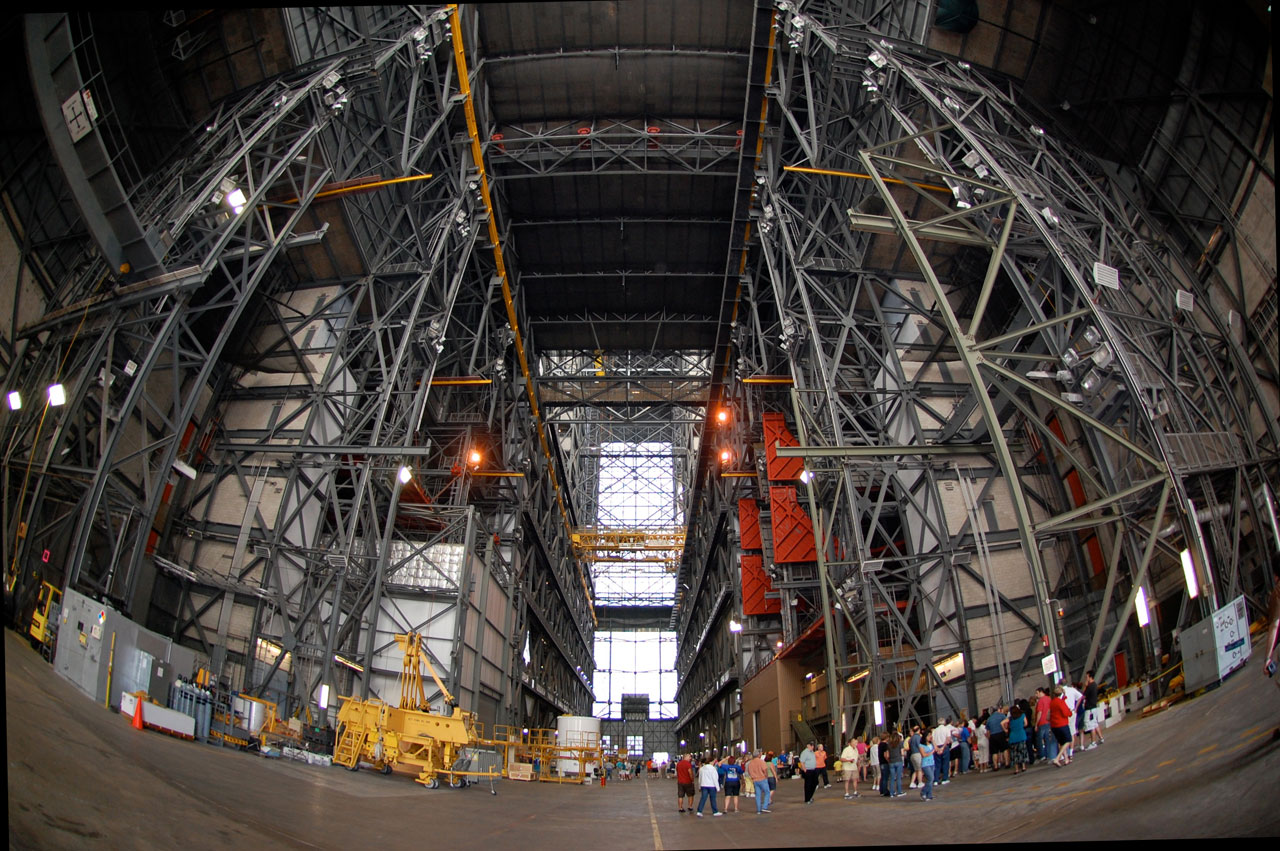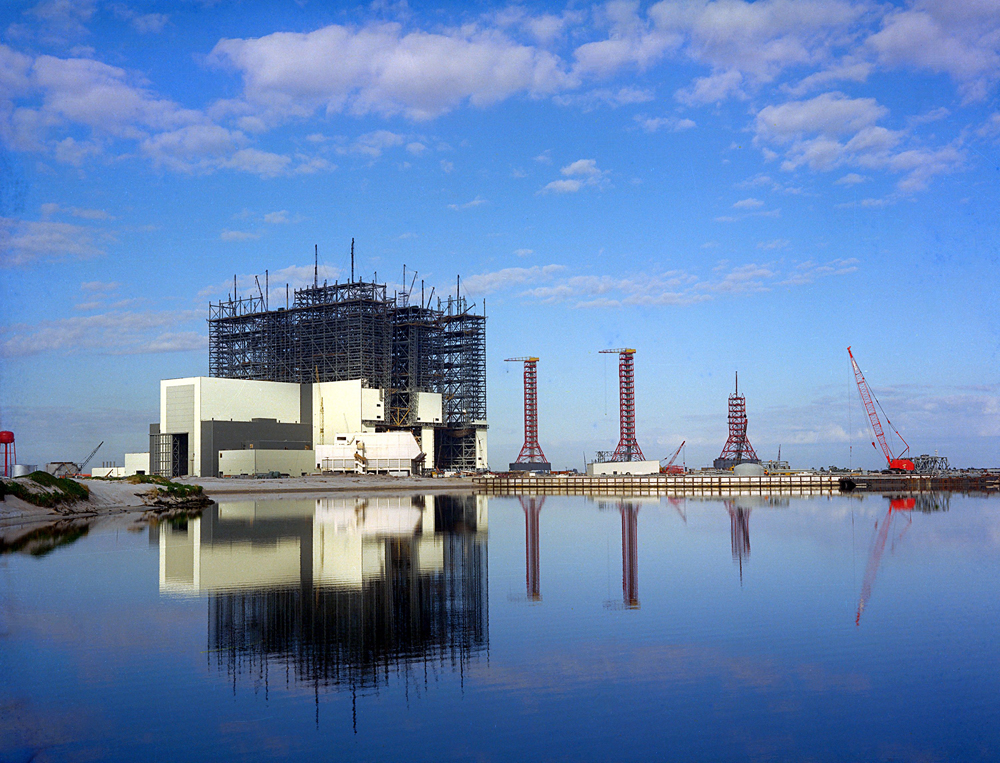NASA Invites Public to Tour Voluminous Vehicle Assembly Building

With no more space shuttles to prepare for launch, and years to go before its next-generation heavy-lift rocket is ready to fly, NASA is re-opening its 52-story Vehicle Assembly Building to the public after more than three decades of it being closed for general tours.
Beginning next month, visitors to NASA's Kennedy Space Center in Florida will be able to purchase tickets for a new "Up-Close" tour, which in addition to allowing spectators to see launch pads and other facilities around the spaceport, will take them insidethe Vehicle Assembly Building, or VAB.
The huge building — the largest single-story structure and the fourth largest by volume in the world — was used for 30 years to stack shuttle orbiters with their boosters and fuel tanks for 135 missions. Before then, the VAB's original use was to assemble the stages that formed the 363-foot (110-meter) Saturn V rockets that launched Apollo astronauts to the moon.
The building — its side adorned with a painted U.S. flag so large that a city bus could fit within any one of its red and white stripes — has attracted tourists since it was built in 1966. But since 1978, spectators have had to settle for an outside view only as the solid fuel in the shuttle's boosters made the building too dangerous to allow in large groups of visitors.
With the shuttle program over, the Kennedy Space Center Visitor Complex (KSCVC) is now able to offer limited daily tours to bring guests into the VAB.
Shuttle sighting
Once inside the 525-foot (160-m) tall Vehicle Assembly Building, tour-goers will walk along the edge of the transfer aisle, a 700-foot (213-m) long corridor that divides the voluminous hangar's north and south sides. The aisle was used to move the behemoth segments of Saturn rockets and space shuttles among the four high bays within the building.
Breaking space news, the latest updates on rocket launches, skywatching events and more!
It is within one of these high bays that some visitors may still spot one of NASA's retired shuttles, waiting inside the VAB to be readied for its public display.
With three orbiters to prepare — Discovery, Endeavour and Atlantis — and only two operational processing facilities, the space center has taken to temporarily parking one of the shuttles inside the VAB. Currently, Endeavour is inside High Bay 4, but it is expected to trade places with another orbiter soon.
Beginning next year, NASA will start shipping the orbiters out to their respective museums, with Discovery slated as the first to leave in April. The shuttle encounter inside the VAB will therefore be available for a limited time only.
Signs of things to come
Even without the rare shuttle sighting, spectators will find plenty to see inside the building.
Tour guides will provide overviews of the work done in the VAB, and colorful signage will offer tourists a view of the past engineering feats that have taken place behind the 456-foot-tall (139-meter-tall) high bay doors, such as the work of the building's two 325-ton bridge cranes that were used to lift the shuttle orbiters and mate them to their external tank and boosters with pinpoint accuracy.
Visitors will also preview the planned operations that will take place in the coming years to support NASA's next space exploration program: the Space Launch System, or SLS. The Congressionally-authorized heavy-lift rocket and its Multi-Purpose Crew Vehicle (MPCV) — which when fully assembled will tower as tall, if not taller than the Saturn V — is being developed to launch astronauts on exploration missions .
Continue reading at collectSPACE.com to learn about the other sights on the new "KSC Up-Close" tour outside of the Vehicle Assembly Building.
Follow collectSPACE on Facebook and Twitter @collectSPACE and editor Robert Pearlman @robertpearlman. Copyright 2011 collectSPACE.com. All rights reserved.

Robert Pearlman is a space historian, journalist and the founder and editor of collectSPACE.com, a daily news publication and community devoted to space history with a particular focus on how and where space exploration intersects with pop culture. Pearlman is also a contributing writer for Space.com and co-author of "Space Stations: The Art, Science, and Reality of Working in Space” published by Smithsonian Books in 2018.
In 2009, he was inducted into the U.S. Space Camp Hall of Fame in Huntsville, Alabama. In 2021, he was honored by the American Astronautical Society with the Ordway Award for Sustained Excellence in Spaceflight History. In 2023, the National Space Club Florida Committee recognized Pearlman with the Kolcum News and Communications Award for excellence in telling the space story along the Space Coast and throughout the world.



